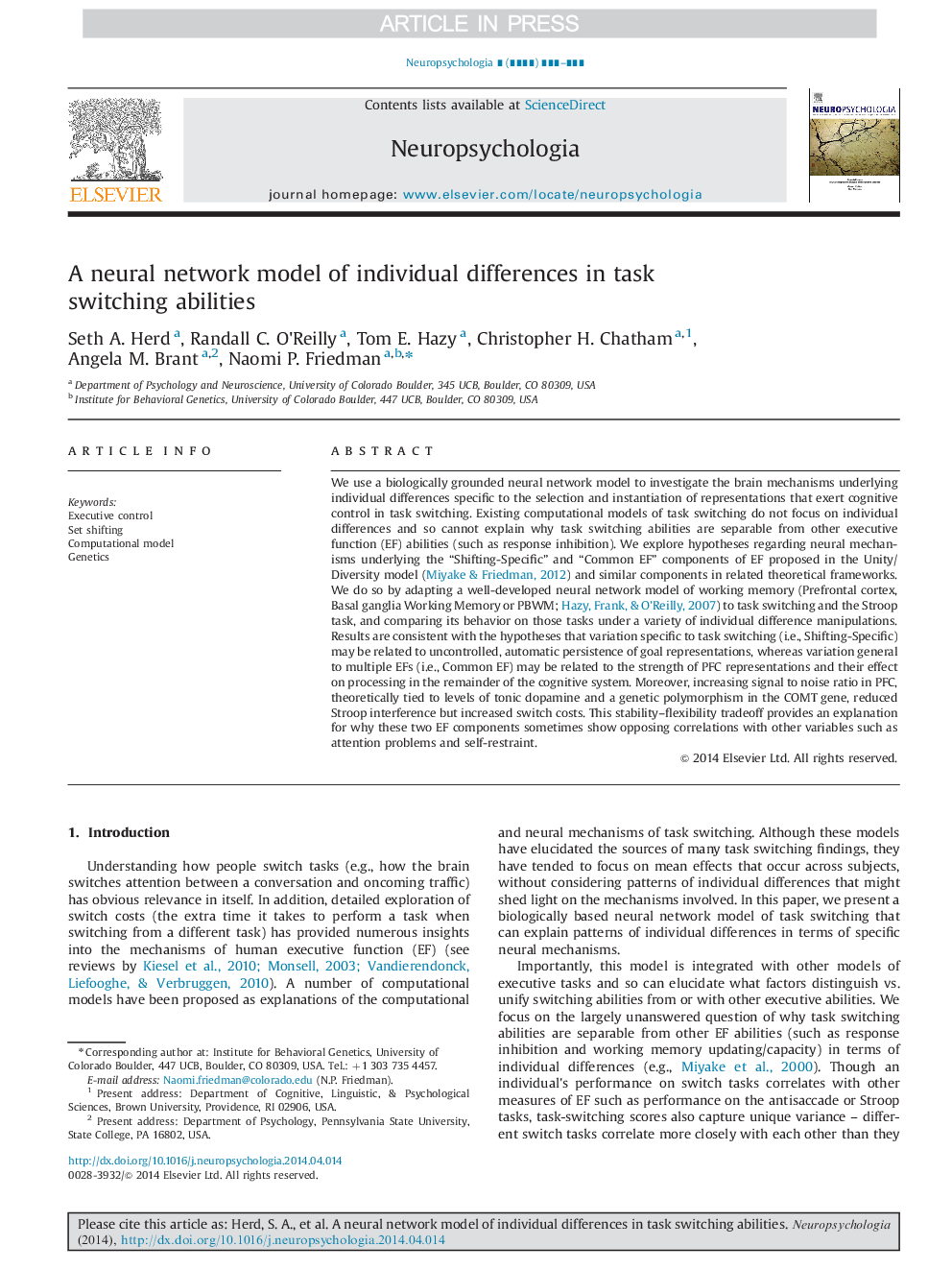| Article ID | Journal | Published Year | Pages | File Type |
|---|---|---|---|---|
| 7320966 | Neuropsychologia | 2014 | 15 Pages |
Abstract
We use a biologically grounded neural network model to investigate the brain mechanisms underlying individual differences specific to the selection and instantiation of representations that exert cognitive control in task switching. Existing computational models of task switching do not focus on individual differences and so cannot explain why task switching abilities are separable from other executive function (EF) abilities (such as response inhibition). We explore hypotheses regarding neural mechanisms underlying the “Shifting-Specific” and “Common EF” components of EF proposed in the Unity/Diversity model (Miyake & Friedman, 2012) and similar components in related theoretical frameworks. We do so by adapting a well-developed neural network model of working memory (Prefrontal cortex, Basal ganglia Working Memory or PBWM; Hazy, Frank, & O'Reilly, 2007) to task switching and the Stroop task, and comparing its behavior on those tasks under a variety of individual difference manipulations. Results are consistent with the hypotheses that variation specific to task switching (i.e., Shifting-Specific) may be related to uncontrolled, automatic persistence of goal representations, whereas variation general to multiple EFs (i.e., Common EF) may be related to the strength of PFC representations and their effect on processing in the remainder of the cognitive system. Moreover, increasing signal to noise ratio in PFC, theoretically tied to levels of tonic dopamine and a genetic polymorphism in the COMT gene, reduced Stroop interference but increased switch costs. This stability-flexibility tradeoff provides an explanation for why these two EF components sometimes show opposing correlations with other variables such as attention problems and self-restraint.
Related Topics
Life Sciences
Neuroscience
Behavioral Neuroscience
Authors
Seth A. Herd, Randall C. O׳Reilly, Tom E. Hazy, Christopher H. Chatham, Angela M. Brant, Naomi P. Friedman,
